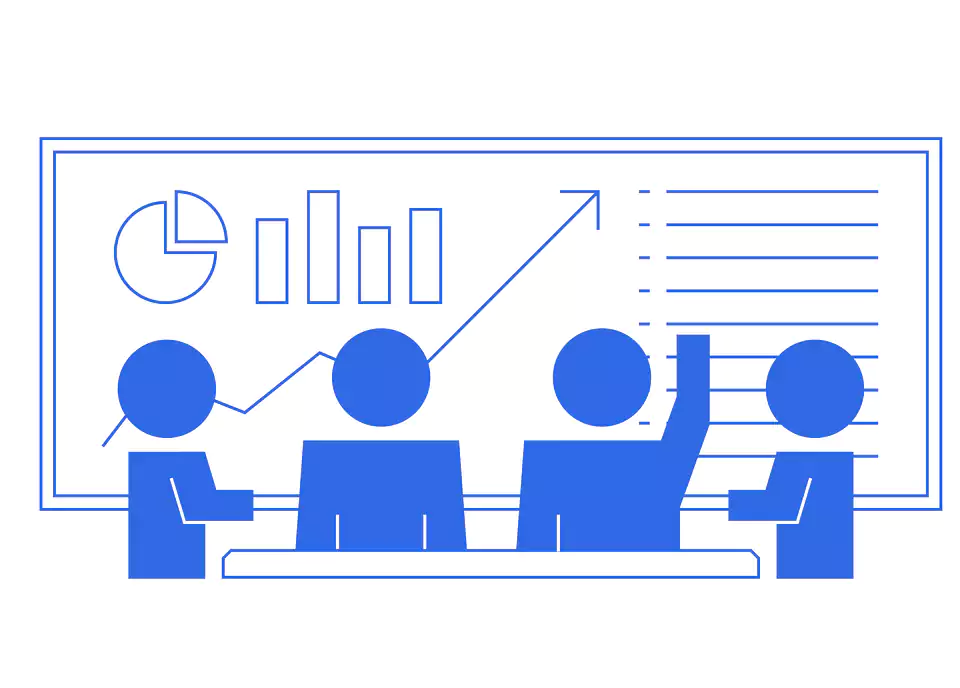Understand the different FDA Pre-Sub options—written feedback, teleconference, or in-person meetings. Explore benefits, limitations, and preparation tips to choose the format that aligns with your project goals and regulatory needs.
When you participate in the FDA’s Pre-Submission program, you have options for how you receive your feedback. In your request, you will have indicated whether you prefer written feedback only, or a meeting (with written feedback plus discussion)[18]. If a meeting is chosen, it can be conducted in-person or via teleconference/videoconference. Each format has its pros and cons:
Choosing “written feedback only” means you will receive FDA’s responses in writing (typically an email with a feedback document) by about day 70, and no face-to-face meeting is scheduled. This option can be suitable when your questions are straightforward or narrowly focused, and you anticipate that FDA’s written answers will likely resolve them. The benefits of written-only feedback include: – Faster resolution: You effectively skip the scheduling wait for a meeting and get your answers as soon as they’re ready (up to 70 days). Once you have the written response, you can immediately proceed with next steps, rather than waiting for a meeting date. – No meeting preparation needed: You don’t have to prepare a presentation or coordinate schedules. This can be logistically simpler, especially for international sponsors who may find scheduling a call across time zones challenging. – Official record is clear: The written response is the final word from FDA for that Pre-Sub. There’s no possibility of misinterpreting spoken comments, since everything is documented.
However, the drawback is lack of interactivity. You won’t have an opportunity to ask clarifying questions in real time. If any part of the FDA’s written feedback is unclear or prompts new questions, you might need to submit another Q-Sub or attempt to clarify via email (informal follow-up outside the official process is generally limited – significant new questions would require a new Pre-Sub). Thus, written-only is best when you’re confident you asked the questions clearly and don’t anticipate needing a dialogue.

Many companies initially opt for a meeting but reserve the right to cancel it if the written responses fully answer their questions. FDA’s process supports this: if you find the pre-meeting written feedback sufficient, you can notify the FDA to cancel the meeting, and the written feedback becomes the final outcome. This way, you had the option of a meeting but didn’t use FDA’s time unnecessarily.

If you request a meeting, FDA allows it to be in-person (face-to-face) at FDA offices or virtual (by teleconference or videoconference). In practice, most Pre-Sub meetings today are held via teleconference (or video), as they are easier to arrange and don’t require travel. FDA considers in-person and teleconference meetings equivalent in terms of status – you’ll get the same feedback either way. The choice usually comes down to practical considerations: – In-Person: These can be valuable if you want to show FDA a device prototype or demo in real life, or if you believe a face-to-face conversation will facilitate better communication. In-person meetings might include a brief presentation from your team. Keep in mind they require travel to FDA (usually in Silver Spring, MD) and scheduling might be a bit more constrained due to room availability. FDA staff like branch chiefs or specialists may join in person as needed. The atmosphere is formal but collaborative. – Teleconference / Virtual: By far the more common format. FDA will provide a dial-in or virtual meeting link. You can share slides via screen-share if you have visual aids (which you should send to FDA in advance, typically a few days before the meeting, so they can distribute to attendees). A teleconference is efficient and avoids travel costs. The interaction is essentially the same as in-person in terms of Q&A. One consideration: ensure a clear phone line or stable internet connection, and have any team members announce themselves, so FDA knows who is speaking.
If you go the meeting route (either in person or teleconference), plan it carefully. Review FDA’s written feedback beforehand — you will usually receive it about five days before the meeting. As a team, identify which answers you want to discuss further. For example, if FDA said “We do not agree with X and suggest Y,” you might prepare a follow-up question such as: “Would X be acceptable if we also do Z?” The meeting is your chance to get clarification or negotiate minor changes. Prepare a brief agenda or presentation; many sponsors create a short slide deck that summarizes FDA’s feedback question by question, with corresponding follow-up questions or discussion points. This helps keep the meeting focused. Remember not to introduce brand-new data or questions that weren’t in your Pre-Sub package — FDA generally won’t provide feedback on new information they haven’t reviewed in advance. Stick to clarifying the feedback you received.

During the meeting, focus on dialogue rather than presentation. FDA already has your materials and preliminary responses. Use the time to ask for clarification, understand the reasoning behind FDA’s feedback, and confirm next steps. If something in their written response is unclear, ask them to elaborate. If you think they misunderstood part of your package, you can clarify it now. It’s also helpful to confirm your understanding by the end of the discussion (e.g., “So to recap, FDA recommends we perform both test A and test B, and if those are acceptable, no clinical study is needed, correct?”). Finally, designate someone on your team to take notes — you’ll need to formally write meeting minutes later. Do not record the meeting, as recordings are not allowed. The goal is to capture agreements, action items, and clarifications for future reference.
Whether in-person or virtual, an interactive Pre-Sub meeting is invaluable for getting real-time insight into FDA’s thinking. Many sponsors report that nuances picked up during the discussion (tone of voice, specific wording from a reviewer) helped them better address FDA’s concerns in their submission. It also humanizes the process – you’ll likely work with these same FDA staff on your formal submission, and having met or spoken can establish a good working relationship.

In summary, choose the format that best fits your needs: – If you feel confident in the questions and just need yes/no or straightforward answers, written feedback only might suffice. – If your situation is complex or you suspect you’ll have follow-up questions, opt for a meeting (teleconference) to enable dialogue. – Save in-person meetings for cases where face-to-face interaction adds value, such as device demos or if there’s a large team discussion.

Regardless of format, you will receive written feedback in the end, and that – along with meeting minutes if a meeting occurs – will form the official record. Next, we will discuss some common pitfalls in the Pre-Sub process and how to avoid them, so you can make the most of whichever format you choose.